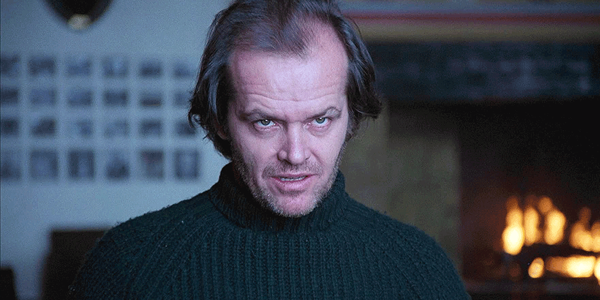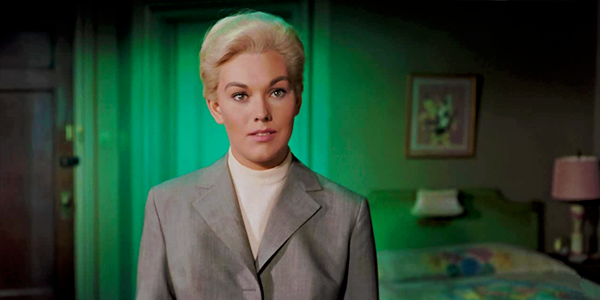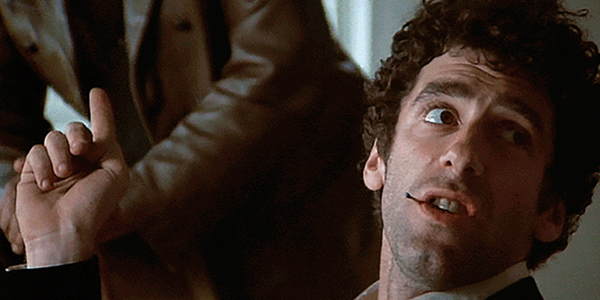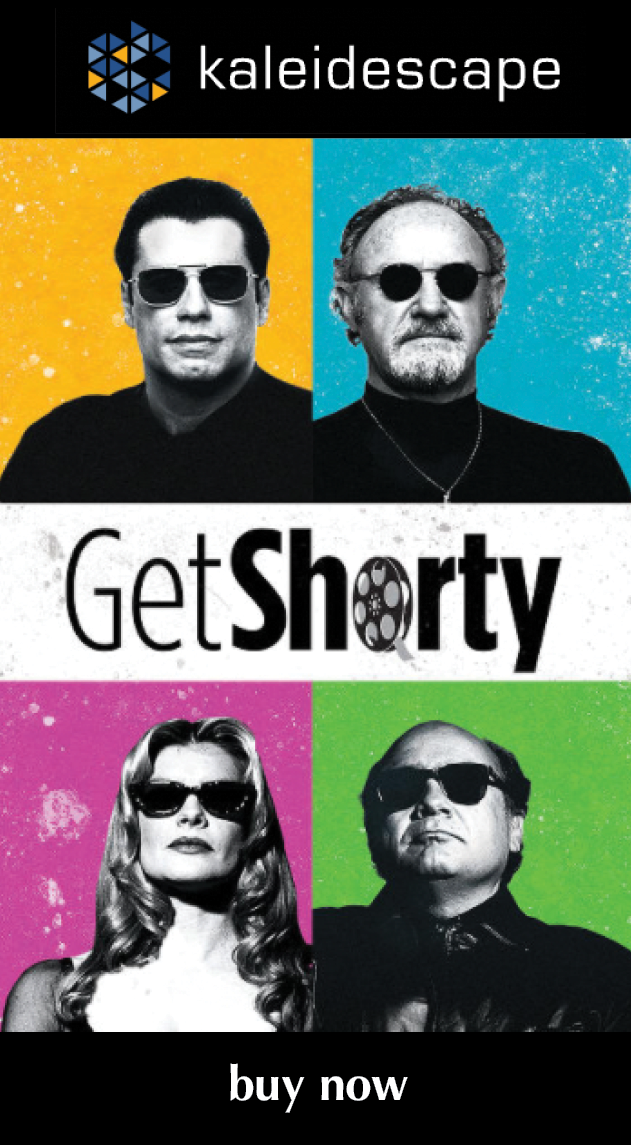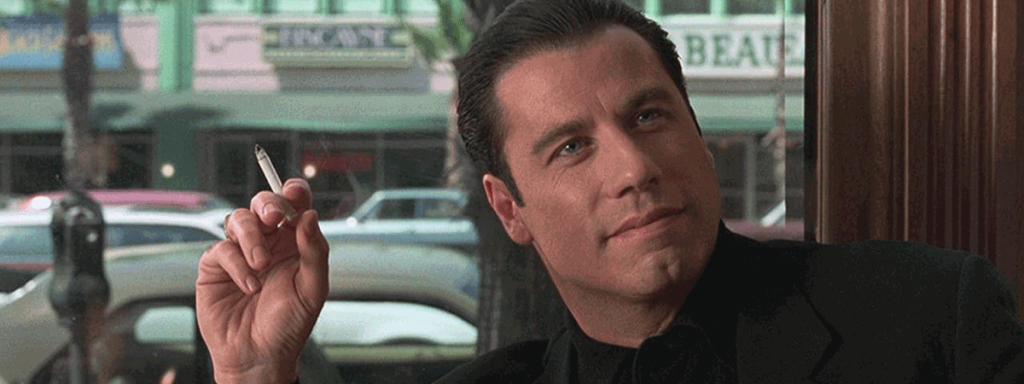
review | Get Shorty
Barry Sonnenfeld’s deft little gem might be the best Hollywood satire ever
by Michael Gaughn
January 10, 2021
UHD has put anybody who reviews home releases in a really odd position. Most catalog titles are still in HD, with many having Blu-ray-quality transfers. But it’s become impossible to watch any of these films without speculating on what they’d look like in 4K HDR—which is something of a gamble because some older titles haven’t survived the process well, looking decidedly uneven. But then there are unquestionably stunning gems like Vertigo, The Shining, and the other titles gathered in “4K HDR Essentials” that have you salivating for more.
Barry Sonnenfeld’s note-perfect Hollywood satire Get Shorty is one of those films that has me shamelessly drooling. You can definitely appreciate its deft, droll visual style in its current HD incarnation, but you can also sense how much more delicious it would be with a 4K HDR buff and shine.
As I’ve said before, Sonnenfeld is the master of the puckish fairy tale, and here he gets to graft his bone-dry style of humor onto Elmore Leonard’s Damon Runyon-meets-Goodfellas mobster yarn, resulting in a film that plays as well 25 years on as it did on the day of its release.
Shorty is worth watching for its flawless casting alone. I’m not a Travolta fan but he doesn’t miss a beat here, giving his small-time hood a boyish innocence and enthusiasm that never feels forced. Hackman is miles from Lex Luthor, turning in a nuanced comic performance that gets big laughs while presenting a fully realized character. This has to be DeVito’s best star turn. And Delroy Lindo is both menacing and charming and Dennis Farina is flat-out funny as the mobsters who just can’t get a break.
This continues all the way down the cast line to the smallest roles. Nobody is here just to be the butt of a joke. Every bit part is fleshed out and compelling. Special kudos go to David Paymer for his story-within-the-story turn as the dry cleaner who fakes his death in a plane crash and flees to L.A. with 300 grand in mob money, sweating all the way.
Sonnenfeld doesn’t get enough credit as an actor’s director, but the scene where Travolta shows DeVito how to play a shylock is so perfectly modulated it deserves to be ranked with the best. It’s almost impossible to convincingly portray an actor acting, let alone actor/director interaction, but all involved are so perfectly in sync here that you’re laughing not just at the jokes and the situation but the sheer virtuosity of the execution.
What Shorty gets right, above everything else, though, is LA and the many ways the movie business overlaps with LA life. It unerringly and evocatively captures the feel of Beverly Hills, the Sunset Strip, the Hollywood Hills, and all the trendy little West Hollywood restaurants that sit practically in the middle of traffic. Maybe the film’s second-best scene—although this might just come from having suffered through this too many times myself—is DeVito going way off-menu to order an elaborate omelet for the table then leaving before it arrives, forcing the other guests to figure out what to do with it.
Shorty works as a satire because it doesn’t come from the often hypocritical vitriol that drives most similar efforts, instead using the quiet accumulation of spot-on touches to make its point, making it far more akin to Raymond Chandler’s The Little Sister than to more overwrought works like The Day of the Locust and SOB. (And don’t even bring up Tarantino, who’s way too much of a raging Neanderthal to even begin to grasp anything as subtle as irony.)
This approach is seamlessly translated into the movie’s visual plan, where the camera moves are restrained (for a Sonnenfeld film) and the lighting is for the most part true to the locales—which I suspect was in part a deliberate strategy to heighten the impact of the film’s stylized, proscenium-warping finale. And it’s exactly because Shorty dances right up to the edge of caricature and exaggeration without crossing over that I think it would benefit immensely from a tasteful application of 4K HDR. Some judicious enhancement would make it that much more engaging without turning it into gratuitous eye candy. (The operative word here, of course, is “judicious.”)
No problems with the sound. This is a dialogue-driven film only occasionally punctuated by bursts of action, and the lines (“E.g., i.e., f— you,” “You think we go to see your movies, Harry? I’ve seen better film on teeth.” “My favorite color—putty”) are all crisp and clear, as are the gunshots. It’s usually a little too obvious when temp tracks make their way into the final film but Sonnenfeld does such a great job of deploying Booker T. & the M.Gs that it’s hard to make much of a stink. The cues are nicely placed in the foreground without ever being in your face.
It’s one thing to call Get Shorty the best film in the very circumscribed mobsters-come-to-Hollywood genre, it’s another to say nobody’s ever done a better job of skewering Hollywood—a windmill many have tried to tilt only to wind up on their asses. Shorty never tries to be bigger than it needs to be, which is why it continues to shine as a compact, quietly dazzling gem.
Michael Gaughn—The Absolute Sound, The Perfect Vision, Wideband, Stereo Review, Sound & Vision, The Rayva Roundtable, marketing, product design, some theater designs, a couple TV shows, some commercials, and now this.
PICTURE | While you can appreciate the movie’s deft, droll visual style in its current Blu-ray-quality incarnation, you can also sense how much more delicious it would be with a 4K HDR buff and shine
SOUND | This is a dialogue-driven film only occasionally punctuated by bursts of action, and the lines are all crisp and clear, as are the gunshots
© 2025 Cineluxe LLC


